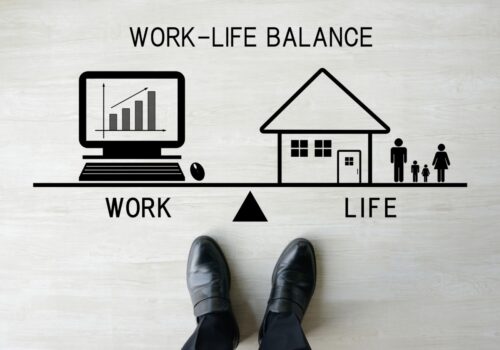Modern corporate culture needs the integration of variety to perform better. Diversity, Equity, and Inclusion (DEI) is a tool that can work in a direction to make that happen. DEI together makes up a package that ensures that a workspace develops to its full potential, including individual improvement as well as group cohesion.
A corporate workplace runs on the cooperation of each member, and for this, it becomes necessary that variety is both fostered as well as promoted. Variety among individuals and an understanding of it, make it infinitely more likely that people will engage in constructive discourse and take varied ideas into account. This not only improves the productivity of the workspace but also develops the individual.
What is Diversity?

In Ola Joseph’s famous words, “Diversity is not about how we differ. Diversity is about embracing one another’s uniqueness.” Diversity refers to all the ways that human beings are different from one another. It is a characteristic of a multicultural social or professional group. So, in a workplace, diversity would refer to the extent to which each working member is different from one another. For example, colleagues with varying marital statuses, socioeconomic backgrounds, ethnicities, sexual orientations, and genders are all diverse because they differ from each other on these grounds.
The greater the variety, the greater the cultural diversity of a workspace. Unfortunately, politics has, since time immemorial, sprung entirely out of differences. Diversity is necessary for workspaces, especially when one takes into consideration the fact that history points out, consistently, that the human mind is generally wary of diversity. The tendency to repel, punish, criticize, or massacre that which is different or unfamiliar leads to discord and a general lack of peace. Diversity in the workspace ensures that every individual is educated about sociocultural differences, and what’s more, they consciously put in efforts to integrate the unique differences to synthesize maximum productivity and innovation in the workplace.
What is Equity?

Equity can be considered an alternative expression for fair treatment and opportunity. The word differs from “equality” not just phonetically, but semantically as well. Equality refers to giving the same opportunities to everyone, but equity refers to providing fair opportunities. What you have to remember here is that, as Rick Riordan put it, “Fairness does not mean everyone gets the same. Fairness means everyone gets what they need.” In terms of equity, a person backward in terms of history is provided added help along with equal opportunities to bridge the gap of hitherto systemic discrimination or lack of privilege. Equity differs from equality and is an inarguably better option because it fixes historical and systemic injustices in the process of providing equal opportunities to a person who hails from a socioculturally underprivileged background.
Based on diversity and the assumed superiority of certain ethnic, social, cultural, economic, gender et-cetera groups, certain others are not only ignored but also systemically oppressed. Equity aims at solving such an issue by providing appropriate treatment to each member in a workplace, in an attempt to bring them all to an equal footing irrespective of their sociocultural starting points. Equity just makes it easier for minority diversity groups to feel included and to put out the best results by accelerating their workspace comfort, integration~ and as a result, their productivity too!
What is Inclusion?

Inclusion refers to the integration of varied diversity groups. A workspace~ or any social system, really~ commonly works on majority conditions. It is the majority that decides the rules and laws pertaining to a certain place or situation. This is, in fact, the core tenet of democracy. But this might end up in a manner that overlooks the minority, or worse, further grieves them. Inclusion is necessary because a workspace needs to foster an understanding of the diversity present among the individuals involved. Inclusion is a step towards making sure that no one, irrespective of their sociocultural background, feels left out from the policies and ideals that the corporate environment holds dear. Inclusivity is a fundamental characteristic of any workplace that prioritizes worker well-being and the well being of each individual involved in the smooth functioning of the work environment.
On a more basic level, it is like making sure that every guest is welcomed into your house. You won’t want a guest to feel neglected or overlooked, would you? Inclusivity is essentially the warmth with which you’d welcome any and all of your guests into your house. In IBM VP Claudia Brind-Woody’s words, “Inclusivity means not ‘just we’re allowed to be there,’ but we are valued.” In a corporate or professional setting, this translates to giving a platform to everyone’s voice and formulating policies that benefit, protect, and preserve everyone’s rights.
Why is DEI important?
An environment where diversity, equity, and inclusion (or DEI) are prioritized, is an ideal work climate for almost any corporate functionality. It improves phenomenally upon the psychological safety that each member experiences in a given space. Acceptance and integration of diversity mean that each individual is free to give expression to their most authentic selves. They aren’t inhibited by the possibility of their cultural backgrounds being judged, misunderstood, or mistranslated. Once an understanding of diversity becomes second nature, it makes the process of inclusion even easier.
A resolution of sociocultural differences, or a convergence of the same, increases the collective potential of a workplace. It’s easiest if you think about it in terms of, say, a box of crayons. To make a vibrant picture, you would have to use each colored crayon, and the fact that each crayon is of a different color from another is what adds to the usefulness of the crayons. The
more colors you have in the box, the better! The picture becomes more vibrant, and the individuality of each crayon is what adds value to the box of crayons as a whole.
The workplace, too, is enriched when different heads come together to achieve a goal or complete a task. As the CEO of Google, Sundar Pichai puts it, “A diverse mix of voices leads to better discussions, decisions, and outcomes for everyone.” Diversity brings together multiple sensibilities, that can work together to achieve first-hand innovation. Integration of variety puts together the best ideas from different sources and synthesizes unique and innovative solutions for any problem. DEI is obviously necessary to ensure the well-being of individual members of a group in a corporate environment. But what is equally important is its role in improving the collective productivity, rate of output, and quality of results of the workspace as a whole!
















